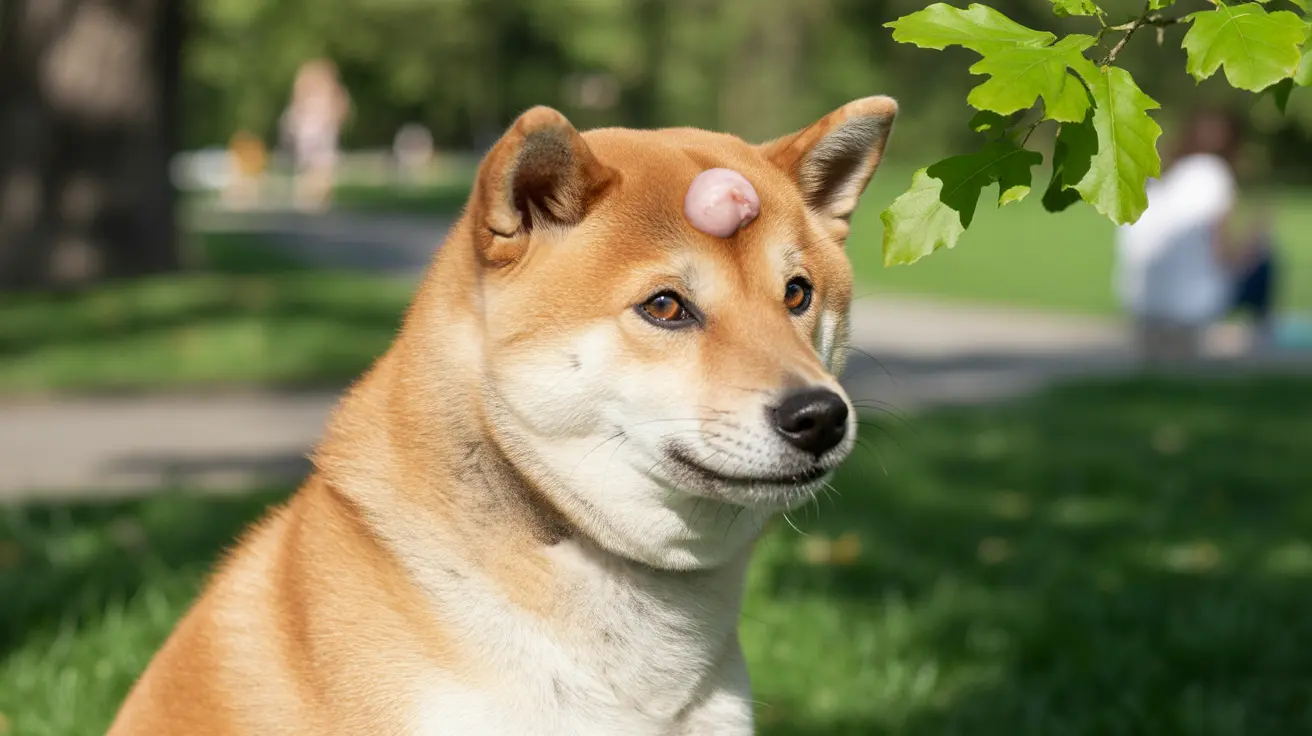What Are Cysts on Dogs' Heads?
Discovering a cyst on your dog's head can be concerning for any pet owner. These fluid-filled sacs commonly appear on various parts of a dog's body, with the head being one of the most frequent locations. Understanding what these growths are and how to address them properly is crucial for your pet's health and well-being.
Most cysts that develop on a dog's head are benign growths that form when normal skin structures become blocked or damaged. They can range from small, barely noticeable bumps to larger, more prominent masses that may require veterinary attention.
Common Types of Head Cysts in Dogs
Sebaceous Cysts
The most frequently encountered type of cyst on a dog's head is the sebaceous cyst. These develop when oil-producing glands become blocked, leading to the formation of a raised, round bump that may appear bluish or whitish in color. Sebaceous cysts are typically painless unless they become infected.
Follicular Cysts
These cysts form from blocked hair follicles and commonly appear on the head and face area. They can contain a thick, cheese-like substance and may become inflamed if irritated or infected. Some dogs are more prone to developing follicular cysts due to their breed or genetic predisposition.
Identifying and Diagnosing Head Cysts
When you notice a bump on your dog's head, it's important to observe its characteristics carefully. Cysts typically appear as:
- Round, smooth-surfaced lumps
- Well-defined boundaries
- Firm or slightly soft to touch
- Mobile under the skin
- Various sizes, from pea-sized to larger
Only a veterinarian can properly diagnose whether a growth is truly a cyst or potentially something more serious. They may perform a fine-needle aspiration or biopsy to confirm the diagnosis.
Treatment Options for Dog Head Cysts
The appropriate treatment for a cyst on your dog's head depends on several factors, including its size, location, and whether it's causing discomfort or showing signs of infection. Treatment options typically include:
Conservative Management
Small, uninfected cysts may not require immediate treatment. Your veterinarian might recommend monitoring the cyst for changes in size, appearance, or symptoms.
Medical Treatment
If the cyst becomes infected or inflamed, your vet may prescribe:
- Antibiotics to fight infection
- Anti-inflammatory medications
- Medicated shampoos or topical treatments
Surgical Removal
Surgery might be recommended if the cyst:
- Is large or growing
- Repeatedly becomes infected
- Interferes with daily activities
- Causes discomfort
- Shows suspicious characteristics
Prevention and Monitoring
While not all cysts are preventable, you can take steps to minimize their occurrence and complications:
- Regular grooming and skin checks
- Maintaining good skin hygiene
- Prompt veterinary attention for new growths
- Avoiding trauma to the head area
- Following breed-specific skin care recommendations
Frequently Asked Questions
What causes cysts to form on a dog's head and how can I identify them?
Cysts on a dog's head typically form due to blocked oil glands, damaged hair follicles, or trauma. They appear as round, well-defined bumps that may be firm or slightly soft to the touch. The most common type is the sebaceous cyst, which develops when oil glands become blocked.
When should I take my dog to the vet for a cyst on its head?
Consult a veterinarian if the cyst is growing, changes in appearance, becomes red or painful, starts bleeding or draining, or if your dog shows signs of discomfort. Any new growth should be evaluated to ensure it's not something more serious.
How are cysts on a dog's head treated and can they be removed safely?
Treatment options range from monitoring small, benign cysts to surgical removal for problematic ones. Most cysts can be safely removed through a minor surgical procedure under local or general anesthesia, depending on the size and location.
Can cysts on my dog's head become infected or turn into something more serious?
Yes, cysts can become infected if they rupture or are traumatized. While most cysts are benign, any growth should be evaluated by a veterinarian to rule out more serious conditions like tumors.
How can I prevent cysts from developing or recurring on my dog's head?
While not all cysts are preventable, maintaining good skin hygiene, regular grooming, and prompt attention to any skin injuries can help reduce the risk. Some breeds are more prone to cysts, so knowing your dog's predispositions is important.






